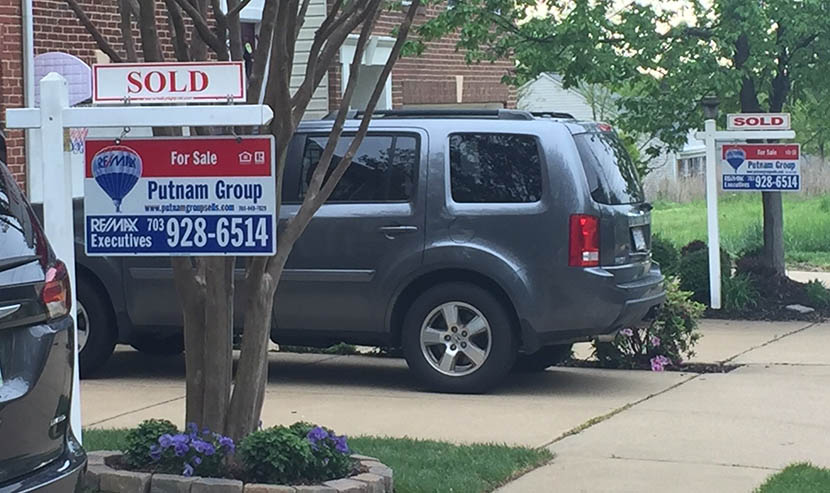
Existing Home Sales Finish 2020 at Highest Levels Since 2006

Existing home sales finished 2020 with the strongest performance in 14 years, the National Association of Realtors reported on Friday.
The report said total existing home sales increased 0.7% from November to a seasonally adjusted annual rate of 6.76 million in December. Sales in total rose year-over-year, up 22.2% from a year ago. Single-family home sales rose at a seasonally adjusted annual rate of 6.03 million in December, up 0.7% from 5.99 million in November, and up 22.8% from one year ago. The median existing single-family home price rose to $314,300 in December, up 13.5% from a year ago.
Existing condominium and co-op sales rose to a seasonally adjusted annual rate of 730,000 units in December, up 1.4% from November and up 17.7% from one year ago. The median existing condo price rose to $272,200 in December, an increase of 6.9% from a year ago.
Activity regionally was mixed on a month-over-month basis, but each of the four areas recorded double-digit year-over-year growth in December. In the Northeast sales rose by 4.5% to an annual rate of 930,000, a 27.4% increase from a year ago. The median price in the Northeast rose to $362,100, up 19.0% from a year ago. Sales in the Midwest were unchanged at 1,590,000 in December, but up 26.2% from a year ago. The median price in the Midwest rose to $235,700, a 13.7% increase from December 2019.
Sales in the South increased by 1.1% to an annual rate of 2,860,000 in December and improved by 20.7% from a year ago. The median price in the South rose $268,100, an 11.3% increase from a year ago. Sales in the West fell by 1.4% from the month prior, to 1,380,000 in December, but improved by 17.9% increase from a year ago. The median price in the West rose $467,900, up 14.2% from a year ago.
“The housing market has been a bright spot of the economic recovery thus far,” said Joel Kan, Associate Vice President of Economic and Industry Forecasting with the Mortgage Bankers Association. “Today’s report on existing home sales showed yet another monthly increase in the pace of sales to 6.76 million units. The December data also capped off 2020 as the strongest year for home sales since 2006. However, there is still disproportionate growth in the higher price tiers, as evidenced by an elevated median home price of $309,800 – up 13 percent from a year ago. This was consistent with data from MBA’s Weekly Application Survey, which revealed that December average loan sizes were the highest in our survey’s history.
Kan said home-price appreciation continues to be driven higher by tight inventory, even as home building has picked up significantly. “More acute affordability challenges will emerge if inventory stays this tight and home-price growth continues to accelerate,” he said. “This in turn would be especially challenging for first-time homebuyers, who make up a third of all home sales.”
“Homes are selling quickly,” said Mark Vitner, Senior Economist with Wells Fargo Securities, Charlotte, N.C. “[But] homeowners are reluctant to sell their homes for a variety of reasons. For starters, many homeowners are hesitant to have people into their homes during the pandemic and the recent resurgence in infections likely contributed to the sharp drop in available inventory this past month. Moreover, with more people working from home and staying in for dining and entertainment, fewer households are looking to downsize, which has made for an extremely tight trade-up market. Many homeowners have also taken advantage of lower mortgage rates to refinance their current homes and do not want to give up the low housing costs that they have locked in.”
Vitner said higher prices should eventually bring out more sellers. “We expect inventories to increase as we move into the height of the spring selling season,” he said.
NAR Chief Economist Lawrence Yun said the momentum is likely to carry into the new year, with more buyers expected to enter the market.
“Although mortgage rates are projected to increase, they will continue to hover near record lows at around 3%,” Yun said. “Moreover, expect economic conditions to improve with additional stimulus forthcoming and vaccine distribution already underway.”
NAR reported the median existing-home price for all housing types in December rose to $309,800, up 12.9% from a year ago ($274,500), as prices increased in every region. December’s national price increase marked 106 straight months of year-over-year gains.
Total housing inventory at the end of December totaled 1.07 million units, down 16.4% from November and down 23% from one year ago (1.39 million). Unsold inventory sits at a record-low 1.9-month supply at the current sales pace, down from 2.3 months in November and down from three months a year ago.
The report said properties typically remained on the market for 21 days in December, seasonally even with November and down from 41 days in December 2019. Seventy percent of the homes sold in December 2020 were on the market for less than a month.
First-time buyers represented 31% of sales in December, unchanged from a year ago but down from 32% from November. Individual investors or second-home buyers purchased 14% of homes in December, unchanged from November but a small decline from 17% in December 2019. All-cash sales accounted for 19% of transactions in December, down from 20% in both November and a year ago.
Distressed represented less than 1% of sales in December, unchanged from November but down from 2% a year ago.
